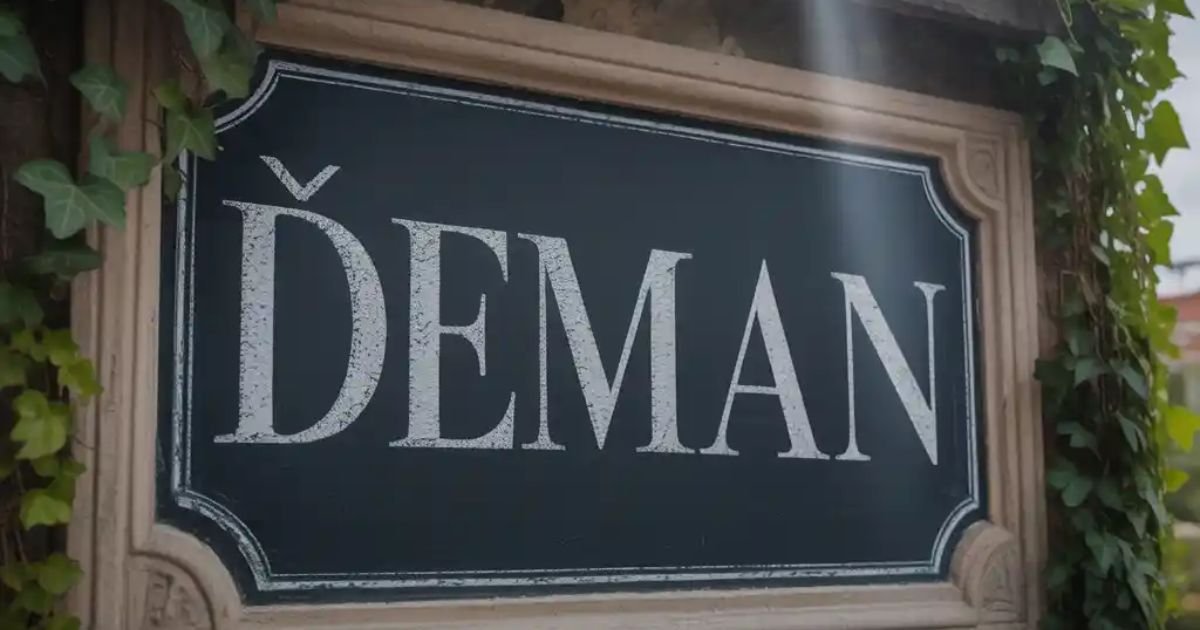Few mythical figures stir as much fascination as đeman, a shadowy symbol found in the heart of folklore stories across Southeast Europe and Asia. Often misunderstood, đeman isn’t just a terrifying creature—it’s a powerful metaphor for inner struggles, moral lessons, and the timeless battle of good vs evil. Through generations, its presence has echoed in oral storytelling, inspiring fear, respect, and reflection. Whether appearing as a supernatural test or a lesson in disguise, đeman carries deep cultural meaning. Today, its legend lives on through rituals, festivals, and even modern art forms. To understand đeman is to explore the soul of ancient belief, shared memory, and cultural heritage.
What is Đeman?
What if a single word carried centuries of ancient myths, legendary figures, and inner struggles? Đeman in folklore and culture does just that. It represents both good vs evil in folklore stories and serves as Đeman as a metaphor for inner conflict. In Balkan and Southeast Asian traditions, Đeman appears in oral storytelling to test human character. It shows up not just as a fearsome creature but as a mirror of human fears and hopes.
People often ask, What is đeman in mythology? It’s not just a demon. It’s also a guardian or teacher. This depth makes it a powerful tool for passing moral lessons. When communities share Đeman tales at festivals, they reaffirm community values and intergenerational wisdom. Through these stories, people explore societal reflection and understand ancestral beliefs in a vivid way.
Origins and Historical Background
Đeman’s story starts in old Balkan lands. Villagers used oral storytelling to pass down these folklore stories over centuries. It links to pre-Christian spiritual traditions and pagan rites. These old roots show Đeman as a guiding force. It helped shape cultural heritage and taught lessons through ritual practices.
Over time, Đeman spread across Southeast Asia. The Role of đeman in Southeast Asian culture became a common theme. It travelled with traders and scholars. The figure merged with local plants, songs, and costumes. These exchanges deepened its symbolism and helped in cultural preservation through mythology.
Characteristics and Symbolism
Every description of Đeman brings to life a creature formed of supernatural forces. Sometimes it’s shadow-like, other times more human. It challenges people to face Moral dilemmas in traditional tales. Often, the creature reflects human fears. But sometimes it also lights the way.

The Symbolism behind đeman stories runs deep. They illustrate good vs evil but often leave a grey area. They show that one must fight one’s own darkness before overcoming external threats. These stories are rich in psychological layers and help people think about Myth vs reality and the Spiritual meaning of mythical figures.
Rituals and Traditions Associated with Đeman
Communities hold ceremonial rituals to mark Đeman’s power. Masks, loud drums, and dances invite the spirit. These rituals echo ancient rites and help with spiritual protection. They also unite neighbors through shared traditional music and dance.
In villages, families pass down masks and chants. Grandparents teach young ones the Moral lessons embedded in each movement. This sharing of rituals helps preserve intergenerational wisdom and sends a message of unity and resilience.
Đeman in Folklore and Storytelling
Đeman thrives in folklore and culture through storytelling. In rural homes, storytellers recount Đeman’s tests. Listeners learn to face their fears. They learn Moral dilemmas in traditional tales and explore Đeman as a reflection of human psyche.
These folkloric representation of good and evil tales shape children’s values. They show how people should act in crises. Over time, these stories support cultural identity and reflect societal reflection. They build community bonds through shared voice and memory.
Cultural and Social Significance
Đeman stories help communities define what matters. They teach cultural identity by linking people to their past. They also drive community values like courage and empathy. When families gather, they recall Đeman’s tests to discuss life’s challenges.

In festivals, Đeman-themed performances connect generations. Young people learn from elders. This creates a cycle of intergenerational wisdom. It also helps in Cultural preservation through mythology, ensuring that traditions survive modern change.
Đeman in Modern Media and Pop Culture
Đeman’s presence now shows up in movies, video games, and books. Directors use Đeman to explore the Influence of folklore on modern media. You’ll also find Đeman in video games and literature where heroes face its trials. Graphic novels play with its form. Digital designers draw Đeman masks in animations. All this is part of Modern reinterpretations of folklore.
One indie game in the U.S. reimagines Đeman as a guide. It teaches players to heal inner fears. This use in entertainment and art proves its powerful symbolism stays alive. Artists keep offering fresh artistic interpretations that surprise and thrill audiences.
Religious and Spiritual Dimensions
Đeman also lives in spiritual contexts. In some areas, believers see it as a test sent by divine forces. Communities pray for spiritual protection before facing Đeman in rituals. They place it alongside saints or deities. These beliefs show the Spiritual meaning of mythical figures and how religion blends with folklore.
Churches sometimes host Đeman-themed parish events. They frame it as a sign to resist sin. This blend of ancient myths and modern faith supports a bridge between folk tradition and organized religion.
Food and Festive Cuisine in Đeman Celebrations
During Đeman festivals, families make special dishes. They serve red berries, black bread, and sweet pastries shaped like masks. Each ingredient carries spiritual protection symbolism. Tables overflow to welcome guests and bond communities.
Recipes get handed down. A grandmother in Bosnia uses garlic as a shield ingredient. A village in Indonesia adds turmeric for cleansing. These foods strengthen community values and keep ceremonial rituals alive through taste and smell.
The Future of Đeman
Young people are renewing Đeman’s tale online. Through TikTok, they share skits and crafts. They ask, How does Đeman speak to our struggles today? They explore Đeman as a reflection of human psyche, and share analogies about mental health.

Schools in the U.S. host workshops on Đeman. Students draw its masks and write modern tales. This Digital storytelling of traditional myths ensures Đeman stays relevant. It transforms into a symbol of healing and cultural unity.
Conclusion
Đeman in folklore and culture remains a bright thread weaving through centuries. From villages to video games, it shapes moral codes and inner growth. It teaches moral lessons, strengthens cultural heritage, and sparks creative reinterpretations. Facing Đeman today means facing ourselves, learning courage, and connecting across borders and generations.
FAQs
1. What is Đeman in folklore and culture?
It’s a mythical figure symbolizing the struggle between good vs evil and human inner conflict.
2. Is Đeman just a demon?
No, Đeman is deeper than a demon—it reflects moral lessons and cultural values.
3. Where does the idea of Đeman come from?
It originates from Balkan and Southeast Asian folklore stories passed down through oral storytelling.
4. How is Đeman shown in modern media?
Đeman appears in video games, films, and books as a symbol of fear, choice, and growth.
5. Why do communities still celebrate Đeman?
Because it helps preserve cultural heritage, teach values, and strengthen community identity.






Leave a Reply